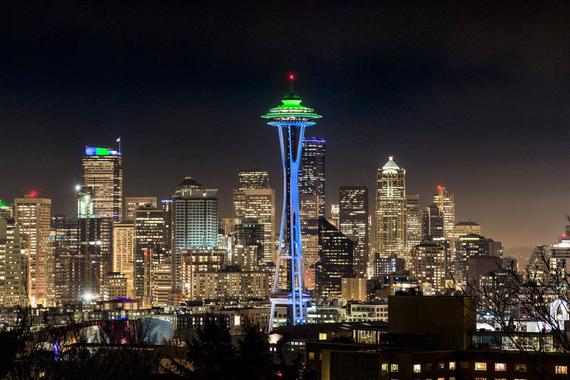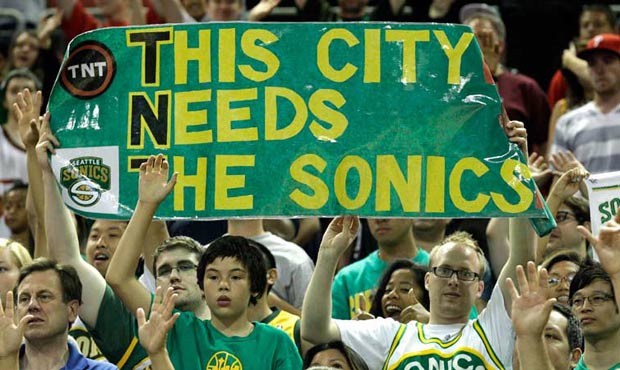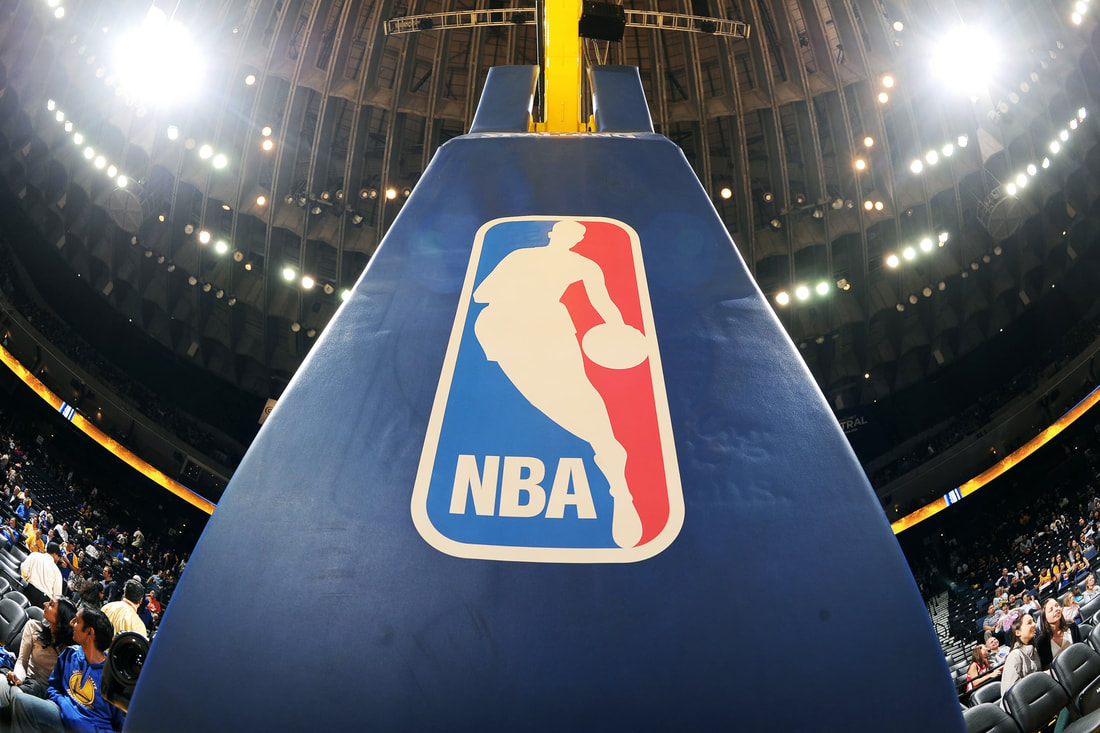|
Twitter and NBA circles have been buzzing the last week after reputable news broke about the NBA considering expansion to 32 teams as a means of helping to cover the financial losses from 2020 and COVID-19. The fun part of the conversations come up first: which cities will get teams, how will the league re-align itself and what does this do to scheduling?
Less than two years ago while pursuing my Master's Degree in Sports Management at Georgetown, I chose this exact topic for my grad school thesis. The paper touched on four topics:
While jumping into questions 3 and 4 provide the most enjoyable casual banter, I quickly found that answering questions 1 and 2 was relevant and necessary before moving to them. What I will do below is give a condensed, more reader-friendly synopsis of my thesis, which hopefully drives conversation moving forward about the realistic nature of each prospective city. One caveat to be aware of was a qualifier I quickly conceded while doing my research: Seattle is going to be receiving an expansion city. For nostalgic purposes, demands from fans, frequent conversation and market analysis, Seattle was all but a given. That made the rest of the paper about figuring out which city had the best case to host Franchise 32.
With the severe financial losses suffered this summer, the first question of "which factors need to be met before the NBA considers expansion" is a moot point. My thesis centered on financial harmony across the league instead of strife; many quotes and commentary seemed to indicate that commissioner Adam Silver would prefer to wait until all 30 franchises were profitable before adding additional members.
On its face, that theory made and still makes sense. The NBA has two types of franchises: those who contribute to revenue sharing and those who collect from it. Adding more franchises shrinks the slice of the pie each team who collects from revenue sharing would receive. By adding new teams to the fold, the owners in the red would be voting to further the financial hole they were in by approving additional franchises. At the very least, the NBA needed to get to a point where revenue sharing would lift franchises clear into the green before considering additions. Revenue sharing is a complex formula based on many factors, and the disappearance of national TV games from last year and ticket sales is very harmful. However, there's nothing more harmful to revenue sharing than the large losses incurred from the lack of local television games that were broadcast to the end of the regular season last year. As it turns out, the biggest indicator of financial viability of a franchise in the NBA has been their local television revenue from regional broadcast partners. Unsurprisingly, major market franchises like the New York Knicks, Los Angeles Lakers and Chicago Bulls all get massive paydays from their broadcast partners; there are so many eyeballs served in their market that they can sell their broadcast rights for. It was reported in 2012 that the Lakers entered a 20-year, $3 billion deal with Time-Warner Cable. That's no small chunk of change. Inversely, smaller city franchises who don't have the same luxury behind them sign much less lucrative deals. The biggest swing factor between teams who contribute to or pull from revenue sharing ends up being their local television deal -- not attendance, success, player salary or (necessarily) depth of ownership's pockets. It's why the small market vs. large market divide has been so apparent in the league for decades. It would stand to reason then that the NBA, if looking to add franchises in the future, would jump towards larger television markets. The logic is simplistic: if looking to add teams who contribute to revenue sharing, try to head to the largest cities and TV markets.
To parse through the most relevant data, we started our focus with Nielsen television ratings and market sizes. Population did little to provide value in this discussion; all that matters is the amount of televisions and cable subscribers within a regional TV market. Nielsen publicizes their rankings by size and gives information about "TV Households", a metric that details all those who pay for cable.
The rankings heavily mirror that of population, though several cities in close proximity end up combining to form one market, thus increasing their size and appeal. An understanding of geography and conjoining markets is also important: NBA teams can enter into agreements with markets outside their own if there's enough interest and no other franchise in their wake. For example, Nielsen lists Boston/ Manchester, NH as one conjoined market. Portland, ME is a separate television market. Portland's closest major city with a professional sports franchise is Boston, and many in Northern New England consider themselves Boston sports fans. While the market in Portland is smaller, less intense and likely to bring smaller returns of revenue, it does factor into the equation for how much TV revenue the Boston Celtics can secure. Below is a list of the most recent Nielsen data available for TV market size in the country, listing the top 55 locations in different tiers.
We call these the "usual suspects". The top 10 are all over 2,000,000 households served and are the major markets. Every city on the top ten claims at least three major professional sports teams (NFL, NBA, MLB, NHL). These are large enough to clearly sustain the presence of multiple professional sports franchises within their market and create clear profits. Some markets even house multiple in the same sport, including New York and Los Angeles in the NBA.
​The next tier is the group 11-20, which have between 1.3 and 1.9 million households. Those are large markets in their own right. From 1.5 and above, pretty much every city holds multiple sport franchises. On the top 20, only two (Tampa and Seattle) do not have an NBA franchise. This is important to come back to later after we roll through the next few tiers.
Another two tiers broken down by size. First are the seven markets between 1 million and 1.3 million households served. They're the mid-to-large markets. Charlotte and Raleigh/ Durham are both on the list, but their proximity and shared professional sports franchises end up making them function as one large market. When combined, they would equal the 10th largest TV market in the United States.
​The next tier is between 850,000 and 1 million homes served. It's important to note that these markets, like Kansas City (~897,000) are roughly half the size of markets like Tampa and Seattle. Also, pay attention to the marginal differences between these and some subsequent markets, which are thought to be much smaller:
Our cutoff was at 550,000 households served. No Big Four professional franchises are in smaller cities with the exception of the Green Bay Packers (Green Bay serves only 394,210 households, 67th in the nation in 2020).
Sifting through these numbers, the first order of business was to talk about negative market share and proximal market share. In other words, if an expansion franchise was added in any of these cities, would it remove a sizable chunk of a current franchise's revenue, or are there cities nearby that can provide additional television revenue that are currently untapped? Some cities immediately became removed as a result. The proximity of Hartford/ New Haven to both Boston and New York, and current deals set up between them, likely meant that the market was too difficult to consider: for only 885,000 eyeballs (the existing hold on proximal markets limits upside), it is not worth denting the existing market. The same could be said for many of the smaller markets on here: West Palm Beach, Greenville/ Asheville, Harrisburg/ Lancaster, Ft. Myers/ Naples, Richmond and Fresno. This is where the thesis pivoted towards a historical context of expansion and how the NBA chooses to do business. There are expensive and detailed geopolitical surveys that go into the process of choosing the right markets; the resources at my disposal didn't allow for the type of depth most businesses can afford. But there's a combination of factors that go into making the right selection, mainly anticipating population growth and urban sprawl, having a localized downtown area that can support an arena, and others. For NBA purposes, this was the biggest takeaway from a look in the past: The NBA has historically preferred to have a larger share of a smaller market than split a large market with another professional sports league. Look at the size of some of the NBA markets on the list. Salt Lake City (30th), Milwaukee (35th), New Orleans (50th), Memphis (51st), Oklahoma City (43rd) -- they have some of the more recent expansions or relocations on this list. It seems apparent that the NBA would rather steer clear of joining a slightly larger market that has an NHL franchise in it. (The inverse is also true: the NHL moves their expansion sites to cities like Winnipeg, Columbus, Nashville and Las Vegas to avoid head-to-head competition with the NBA). The idea is simple: it's better to be a large fish in a small pond than the little fish in a big pond. It makes sense that the NHL would be the largest competition for the league to avoid. Their seasons overlap time-wise, play a similar schedule and are both indoor arena events. The smallest single market to contain both an NBA and NHL franchise is Denver, at 1.5 million households. If that is the litmus test for the league, it would severely damage the bids for cities like St. Louis, Las Vegas, Pittsburgh and Nashville, cities that get their name thrown around quite a bit. It would also clear Seattle and Tampa as markets large enough to likely sustain both an NHL and NBA team. Factors are more complex than that, such as local television ratings, viewership and fan intensity. The Tampa/ St. Pete market has long been feared as one with low intensity, due in large part to the weather and alternative options to staying at home and watching a game. Indicators like relative TV ratings for other franchises, TV viewership for collegiate sports programs on a national scale and percentage of population with cable subscriptions all play a role in developing estimates on fan intensity.
Franchise valuations in the NBA have gone through the roof, soaring into the billions of dollars recently. This past winter, the Utah Jazz, playing in the league's sixth-smallest television market,just sold for $1.66 billion. There is an immense amount of capital that goes into the process and as price tags for purchase rise, the price tag for a buy-in of an expansion franchise also rises.
A start-up franchise would include a hefty amount of initial costs, such as branding and marketing, that drive the actual amount spent by an ownership group higher than their entry fee. There is no exact way to anticipate what a number could look like, but paying north of $2 billion for purchase and start-up is within the realm of possibility. That brings us to the next main point of sifting through the potential hosts: arena space. Negotiations for construction or renovation of NBA-quality arenas is quite difficult and becomes hostile. Ownership groups routinely seek municipal bonds from local government as a means of funding new stadiums, harping on the boost to the local economy as a reason for the city's investment. Many will threaten to leave to a different city if their demands for funding are not met, despite deserved skepticism and many studies showing publicly-funded stadiums are horrible for the taxpayer and local government. There's no way to anticipate exactly how receptive a local government would be to chipping into the costs of renovating or building an arena for an expansion franchise. But with the immense costs associated with bringing in a franchise, it is understandable that the last thing an ownership would want to do is cough up another $1 billion just to have an arena to play in. As such, another important prong of finding the right markets includes having an NBA-ready arena. In my thesis, I spent a fair amount of time diving into what exactly that term meant. The nuts and bolts of it: capacity of at least 17,000 seats (only one current NBA arena is smaller, the Smoothie King Center in New Orleans), location in a downtown corridor (while not a vital piece, there are studies that show small economic impacts and more tickets sold for events at venues close to population centers), arena ownership status (if it is publicly or privately owned), other tenants (most notably looking to avoid college tenants who might enter into exclusive agreements with venues) and modernity (a venue built or renovated in a major way within the last fifteen years).
The relevant factors above for arena usage, size of television market and presence of another professional franchise all blend together to make up an anticipated bid from each city. What I was able to do was trim the list down to eliminate those who clearly don't check more than one box on the list inside that top-55 of market size.
The cities preferred:
The cities removed:
At the end of this project, there were really three prime candidates: Tampa, Kansas City and Louisville, with three backup candidates: St. Louis, Pittsburgh and Las Vegas.
The notion of avoiding cities with NHL franchises under 1.5 million TV households is what drove St. Louis, Pittsburgh and Las Vegas down the list. Pittsburgh and St. Louis border on being large enough to make it work -- in particular St. Louis, where no NFL franchise is present and some proximal markets exist. Pittsburgh struggles in that regard, being so close to Cleveland in the west and Philadelphia/ Washington DC extending into central Pennsylvania. While clamors for Vegas in particular grow loud, their inclusion makes little sense in the current climate. A TV market of only 743,220 in a city that now boasts both an NHL and NFL franchise greatly reduces the NBA's grip on the market. It violates the premise of "big fish in a small pond". When we get to the final three, the same premise of "big fish in a small pond" comes to the foreground. Look at cities like Memphis, Oklahoma City and Orlando, three of the league's recent ventures for franchises that have never hosted an NBA team before. All three see not just the lack of a presence of NHL competition, but all major professional sports. The league has made it fairly clear: the 675,000 they grab from Oklahoma City is more valuable than a small share of 981,000 in San Diego, where other franchises are present. Of the three finalists, that may make the strongest case for Louisville. They fit the mold for what the NBA has sought in the past -- being the only competition in town. Louisville's size (636,150) in the TV market is slightly larger than New Orleans (~615,000) and Memphis (~585,000), but would make it the third-smallest primary market in the league. But much like Memphis, proximal markets are where they can make money. Memphis brings in some money from solid-sized Nashville (983,180) even with their NHL presence and from Little Rock (472,560), only a two-hour drive from downtown. While Memphis itself is under 600,000 in its primary market, there's potential to reach more than 1 million households in their neighboring markets. In Oklahoma City, the aid from Tulsa (509,560) that gets packages from FOX Sports Oklahoma greatly increases their reach. The wild card in the equation is Tampa, a much larger market (1,800,600 TV households) that already has three professional sports franchises. Currently, the NBA is experimenting with the Toronto Raptors playing their home games in Tampa while the COVID restrictions prevent them from traveling to and from Canada. A positive experience could be rewarded with a permanent franchise, much like Oklahoma City was after taking the New Orleans Hornets following hurricane displacement over 15 years ago. A move into Tampa certainly comes with risks, though. None of their other three franchises are wildly successful financially. The presence of Orlando less than 90 miles away dips into their territory, and FOX Sports Florida already broadcasts Magic games in Tampa. It might not be worth trimming their proximal market for one that has already proven subpar in sustaining their own footholds in other sports leagues. In debating Kansas City vs. Louisville, two factors come to the forefront. First: how much potential revenue and eyeballs would the Royals and Chiefs take away from an expansion franchise in Kansas City? The city is 32nd on Nielsen rankings of TV market; if an NBA franchise came to town, it would be the smallest TV market to claim three major professional sports franchises. The current smallest: Pittsburgh (24th), which has almost 200,000 more television households reached. The second question: how much does proximal value swing this equation? While Kansas City is nudging on their ceiling for adding a third professional team, there are 373,000 households in Springfield and another 380,000 in Omaha that could potentially be included in cable packages (Omaha is right on the borderline of being far enough away where interest may not be large enough to include in standard cable packages, and local stations might not bid). Louisville is much smaller, but also closer to Indianapolis, where the Pacers already exist and cut into their market. At the end of the day, it comes down to this: would the NBA be willing to trim down the reach of the Indianapolis market in order to add one in Louisville (which also brings Lexington)? TV broadcasts don't currently reach down to Louisville, so it's not a major cut into the TV market, even though the city's proximity leads to some fandom overlaps. To me, that signals an ability for Louisville to work well as the go-to choice over Kansas City. It jives with prior preferences to take an entire market share, and Louisville is historically an incredibly intense basketball population (they boast the largest local ratings for college basketball contests on ESPN when the Cardinals play). There's an NBA-ready publicly-owned arena with minor negotiations to take place to settle rental agreements and not in need of renovations. The arena is in a downtown corridor, as well, and has seen aggressive bids in the past. NBA legend Dan Issel has headed an NBA to Louisville foundation that has secured some funding in the past. The signaling of the NBA for a quick move on expansion might give them a mobilization advantage.
Now for the fun part (and probably what led you here) -- answering the initial questions 3 and 4: how does this work once a choice is made?
An NBA with 32 teams features two conferences of 16 teams (an Eastern and Western Conference). Each conference has four divisions. The teams will play an 80-game schedule, with two games against non-conference opponents, three games against intraconference but non-division opponents, and four games against division foes. An addition of two games, at the behest of ratings and travel plans, to bring the schedule to 82 games is possible. Here's where the major idea comes in on my part: this is an overwhelming opportunity to reshape travel plans and scheduling that the league cannot pass up. Place the teams into division based on geography and try to pair them up in two sets of two. Consider these as "travel partners" for a large chunk of the season, where they can host back-to-backs that minimize travel in the instances where back-to-backs are required. ​The way things shook out with Louisville as the choice were listed below:
Some of the division breakdowns might seem strange, but the purpose is to limit travel and pair teams in pods of two where they can easily travel. With the planned construction of a new Clippers arena in Inglewood, the need to balance the Staples Center constraints (which was a focus of the scheduling in my thesis) no longer exists.
The travel partner distances are as follows
Remember, the aim is to reduce travel as much as possible. None of this will be perfect, but could decrease long trips for back-to-backs and make scheduling a much easier, more even format.
Of course, these can change by substituting a different franchise for Louisville. If Tampa, that likely slides the Eastern Conference pods to: -Miami and Atlanta, Orlando and Tampa -Charlotte and Washington, Detroit and Toronto -Brooklyn and New York, Boston and Philadelphia -Cleveland and Indiana, Chicago and Milwaukee Or if Kansas City is the choice, they'll move Minnesota to the East to create -Minnesota and Milwaukee, Chicago and Indianapolis ...and a Western Conference pod of -Pelicans and Grizzlies, Nuggets and Kansas City As I dug deeper into this project two years ago, the striking takeaway is how many external factors can change the equation. The COVID interruption is proof of that. Perhaps the largest that we haven't talked about, and was a foundational tenet to the thesis: all of this analysis only matters if there are ownership groups willing to put teams in different locations. If the only positive bid the league can come up with is in Las Vegas, and no other options are enticing, all the analysis gets thrown to the side. That's where I feel most comfortable with Louisville. There's been high interest and intense bids put together recently, spearheaded by Issel himself. They don't just seem like the best option, but the most realistic.
0 Comments
Leave a Reply. |
Adam SpinellaHead Boys Basketball Coach, Boys' Latin School (MD). Archives
September 2021
Categories |




 RSS Feed
RSS Feed
